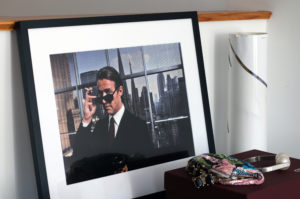Meet Susan Barrett, President at Barrett Barrera Projects
Susan Barrett’s business endeavors center on art—but as fascinating as she finds the works themselves, she is equally fascinated by the communication around them. There is an element of translation that happens between all the people involved in conceptualizing, creating, acquiring, displaying and appreciating art, and her expertise helps ensure that communication among them happens successfully. She’s also interested in figuring out how to share her understanding of art’s relevance across disciplines—from the political to the cultural—so that art isn’t perceived as just a “conceptual playground.”

How do you approach your work each day?
I’m multilingual, and what’s important about that is I understand the translation process. I’m able to understand a problem in a couple different ways. Constantly going back and forth between, “What does this mean commercially?” and “What does this mean in a larger sense?” is something that people who speak more than one language are comfortable in doing.
I’ve had to give up the structural understanding and just be there and deal with things as they come along. As a new company, even though we’ve had great fortune and we have an amazing team, we constantly have to re-evaluate what works for us and for the artist. We’re pretty good at letting go of things if they don’t work. It’s a space that not a lot of people are comfortable in—but it’s the space where I am most comfortable.
I’m lucky enough to have a team who knows what they’re doing and don’t need a lot of hand-holding. I depend on my team an immense amount and put a lot of trust in them. It works really well—we’re all inventing this together.
Give us an overview of the art landscape in this moment.
I’ve been in the art world a long time. I’ve been an artist. I’ve worked in galleries, museums and media. It all has a different perspective—and it has changed. Before, it was more elitist and hard to gauge pricing and value. Now it’s much more egalitarian, except there’s also more out there, more material and more blurring of the lines. Is it art? Video? Fashion? Is it commercial? Is Instagram a new platform?
The art world is still based on the platforms that worked a century ago. The gallery is still the most basic form for seeing art and understanding what new artists are doing. It’s the easiest way to convert value for something as abstract and personal as art. However, that’s not how we as people respond to the world now. We take in much more information. We’re overly stimulated both from the physical world and the internet world. How does art catch up with that? For me, it’s a question of trying to understand “How does the art world fit in this?” and “How can it not only survive, but re-invent itself?” I’m not interested in the existing foundations, because they’re not really working. They’re much more conservative than we have time for.
What are you most excited about for the future?
I am really excited about our expansion and homing in on this nebulous understanding of what is art and how is art valued in society, and how can we re-present art in different ways.
I’m very much looking forward to the building we just purchased and the expansion of scope for that—and the new audiences we will reach. I really like watching my team and how they run their projects in ways I would never think of or in different directions. I love the cooperative nature of how we all work together.
I’m excited about creating our own product lines, in conjunction with artists and designers. We have a line we’ve launched with Christine Corday called SPACEWALKER. They’re jumpsuits based on Christine’s vision that we are all walking through space.
We’ve also released another line of products called Hero. We’ve been thinking quite a lot about the “artist as hero”—and not just the artist but, in our current times, seeing a lot of reinterpretation of what a hero is. We have t-shirts and capes and hats for adults and kids. What we put on can help us with our own identity and how we feel. We hope everyone sees themselves as the hero that they are.
